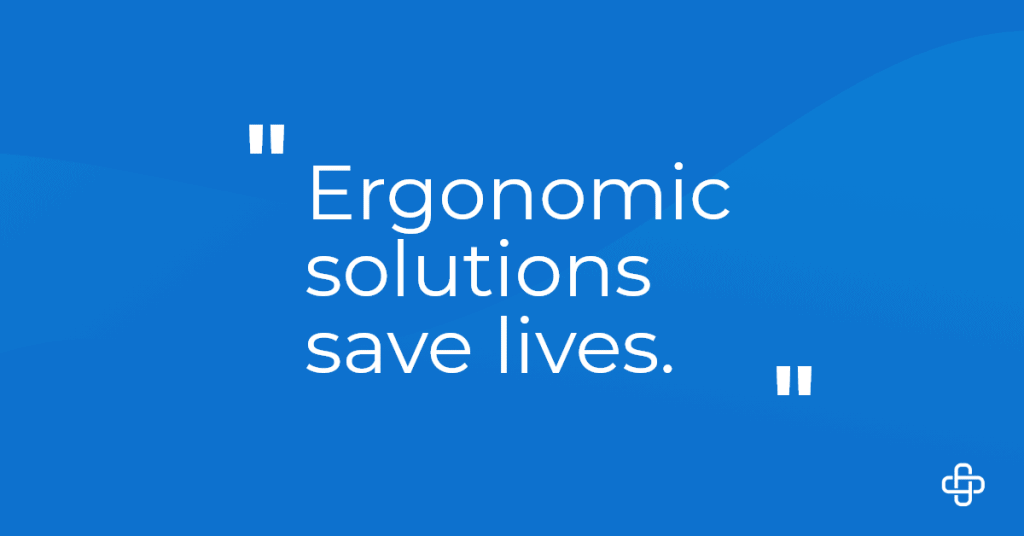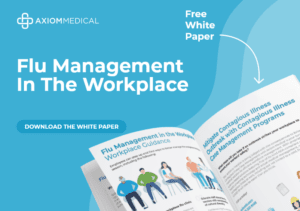In high-risk industries, a small, overlooked detail can mean the difference between life and death. Workers in these environments face demanding physical challenges, where overexertion is a critical and often underestimated threat. Tasks that push the body too hard—whether through repetitive strain, heavy lifting, or prolonged awkward postures—can lead to injuries or even death.
Addressing overexertion requires a proactive approach that looks beyond quick fixes. Every task, tool, and workspace must be designed to fit workers like a glove. This is where ergonomics comes in—a science dedicated to creating environments that enhance safety by reducing strain.

Harnessing ergonomic design can help prevent catastrophic accidents and reduce fatalities. Below, we explore how ergonomic solutions tackle overexertion and create safer workplaces for those serving in the world’s most demanding roles.
Outsmart Overexertion with Ergonomics
Overexertion is a leading cause of workplace injuries. Employees in industries like construction, manufacturing, and mining are vulnerable to injuries from repetitive strain, heavy lifting, and prolonged awkward postures. Unfortunately, these physical stressors often become routine, which can make it harder for workers to notice warning signs before injuries occur. Ergonomics offers practical tools to break this cycle.
Common non-fatal overexertion injuries include:
- Muscle Strains and Sprains: Commonly affect the back, shoulders, and neck due to heavy lifting or repetitive movements.
- Tendonitis: Tendon inflammation caused by repetitive tasks, often in the elbows, wrists, or shoulders.
- Herniated Discs: Caused by improper lifting or excessive strain on the spine.
- Carpal Tunnel Syndrome: Nerve compression from repetitive wrist and hand motions.
- Bursitis: Joint inflammation typically caused by repetitive pressure or movement, especially in the shoulders, elbows, or hips.
Non-fatal overexertion injuries can sideline workers and impact productivity. If left unchecked, these seemingly minor injuries can progress into severe, life-threatening conditions. Or things may even unfold so that the first symptom turns out to be a fatal one. Overexertion doesn’t just strain muscles and joints—it can overwhelm the heart, kidneys, and lungs.
Common consequences of fatal overexertion include:
- Heart Attacks: Triggered by excessive physical strain, especially in workers with pre-existing conditions.
- Heat Stroke: Often caused by overexertion in hot environments, potentially fatal if untreated.
- Severe Musculoskeletal Injuries: Spinal damage or crush trauma from improper lifting that may result in fatal complications.
- Rhabdomyolysis (Muscle Breakdown): Extreme overuse of muscles can release toxins into the bloodstream, causing kidney failure and life-threatening consequences.
- Exertional Collapse: Prolonged standing or intense physical effort can restrict blood flow, leading to organ failure.
- Respiratory Distress: High physical demands in poor air quality can strain the respiratory system.
- Crush Injuries from Equipment Mishandling: Mishandling equipment under pressure can result in deadly accidents.
The risk for all these tragic scenarios, both non-fatal and fatal, is real. So, it’s important to grasp that ergonomics can be used as a preventative measure in practically every case of overexertion.
Ergonomic Solutions for Safer Workplaces
Ergonomic Training and Education
Ergonomic training equips workers with the skills and awareness to prevent injuries before they start. Through workshops and hands-on learning, employees can master proper body mechanics, recognize early warning signs of overexertion, and adapt their movements to reduce strain. Workers can also role-play safe equipment handling to reduce mishaps, such as crush injuries, while reviewing past incidents to learn from errors. Cultures that foster a continual interest in education will keep safety front-and-center in high-pressure environments.
Proper Lifting Techniques and Equipment
Improper lifting is a major contributor to muscle strains, herniated discs, and even fatal injuries like crush accidents. Almost all workers in high-risk industries are trained in safe lifting, but form can fade over time when these actions become second nature. Employers should make sure to give refresher courses on the basics—bending at the knees, maintaining a neutral spine, and using their legs—to keep safe lifting top-of-mind. Furthermore, coupling technique training with the use of mechanical aids such as hoists, forklifts, or motorized carts could further reduce the physical demands, and potential for injuries, on employees.
Task Rotation and Regular Breaks
Task rotation and regular breaks are vital tools for preventing overexertion injuries, both non-fatal and fatal. Overuse injuries like bursitis and rhabdomyolysis often result from repeatedly engaging the same muscle groups, while life-threatening conditions such as heart attacks, rhabdomyolysis complications, or heat stroke can arise from prolonged physical strain without rest. By rotating tasks, employers can distribute workload more evenly, relieving stress on specific muscles and reducing the risk of severe overheating or collapse. Regular breaks, on the other hand, give workers time to recover, rehydrate, and regain energy, helping them stay safer and more productive. Together, these practices create a proactive approach to workplace safety, ensuring employees can perform their best without jeopardizing their health.
Workstation Design and Adjustments
A poorly designed workspace can lead to awkward postures and repetitive strain that could snowball into systemic overexertion. Investing in ergonomic workstation adjustments tailored to individual needs—such as adjustable desks, supportive chairs, and correctly positioned monitors—promotes proper alignment and reduces strain on the body. For workers in high-risk industries, even small modifications can mean the difference between minor discomfort and serious musculoskeletal injuries. Customized workstations encourage better posture, optimize efficiency, and create a workspace where safety and productivity go hand in hand. Proper workstation ventilation should also be considered to ensure fresh air circulation, which reduces respiratory distress and heat-induced fatigue.
Ergonomic Tools and Accessories
The right tools can make even the most demanding jobs safer. Ergonomic accessories like anti-vibration gloves, wrist supports, and back braces help reduce strain on sensitive areas prone to injury. Adjustable tools, such as ergonomically shaped handles or power-assisted devices, allow workers to maintain a neutral posture and exert less physical effort. These innovations reduce the likelihood of injuries like tendinitis, spinal damage, or respiratory distress caused by prolonged overexertion. By equipping teams with ergonomic tools, organizations can create an environment where safety is built into every task.
The Bottom Line
Ergonomic solutions save lives. Each of these solutions represents a layer of protection against workplace hazards, transforming demanding roles into safer ones. By prioritizing these practices, we can create workplaces where injury and death are kept permanently at bay.
If you’d like to take fuller responsibility for ergonomic health in 2025, watch our recent webinar Next-Level Ergonomics: Advanced Programs to Transform Workplace Health with Ergonomist Dr. P Shakeel Marley, PT, DPT and Chief Medical Officer Dr. Scott Cherry.

Cain Boney is a contributor to Axiom Medical’s blog. With a career dedicated to writing about the workplace, Cain focuses on how employee well-being affects organizational success and sustainability in the long term.










